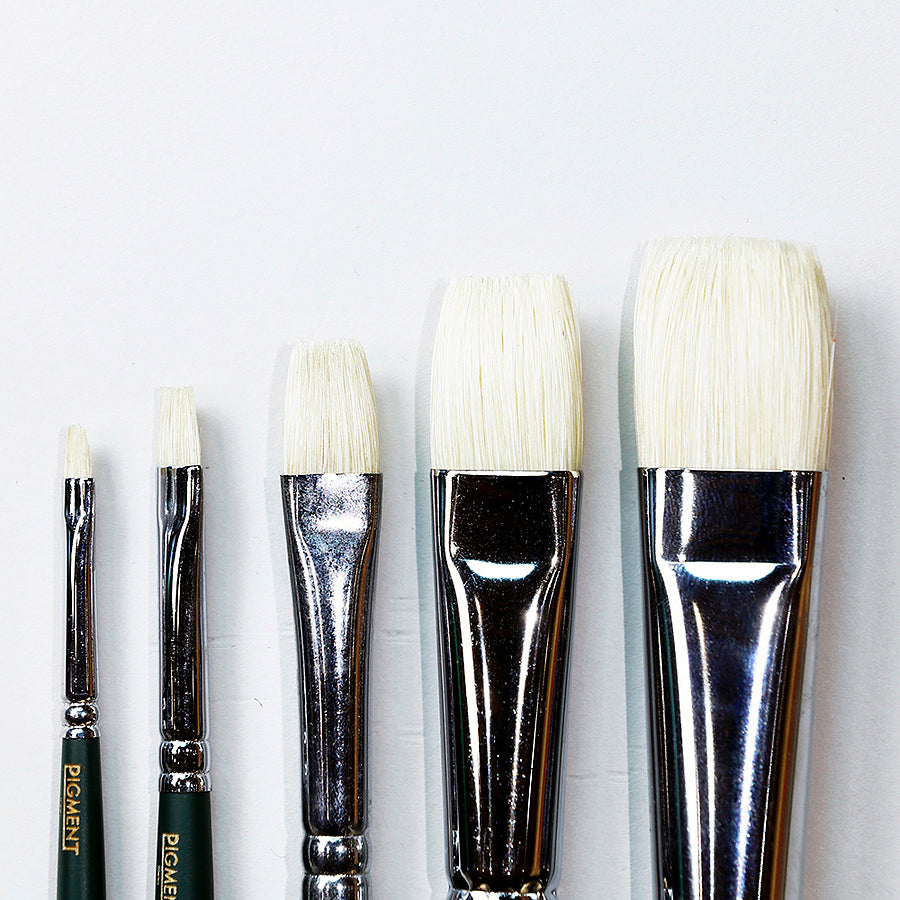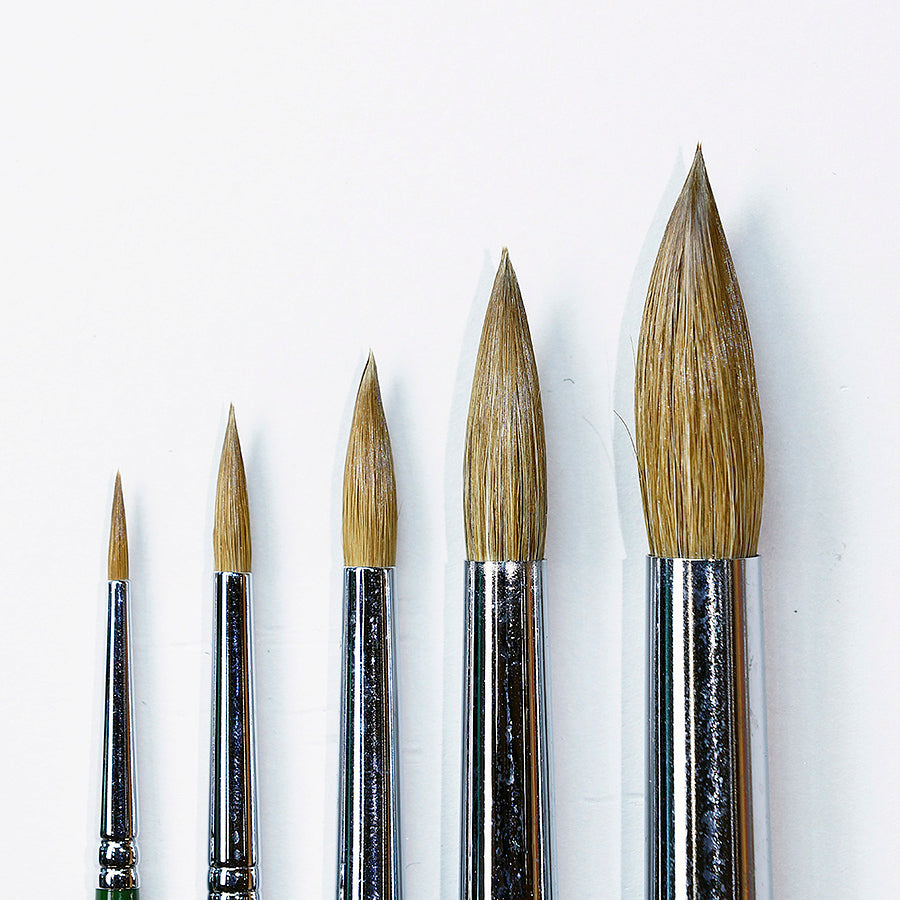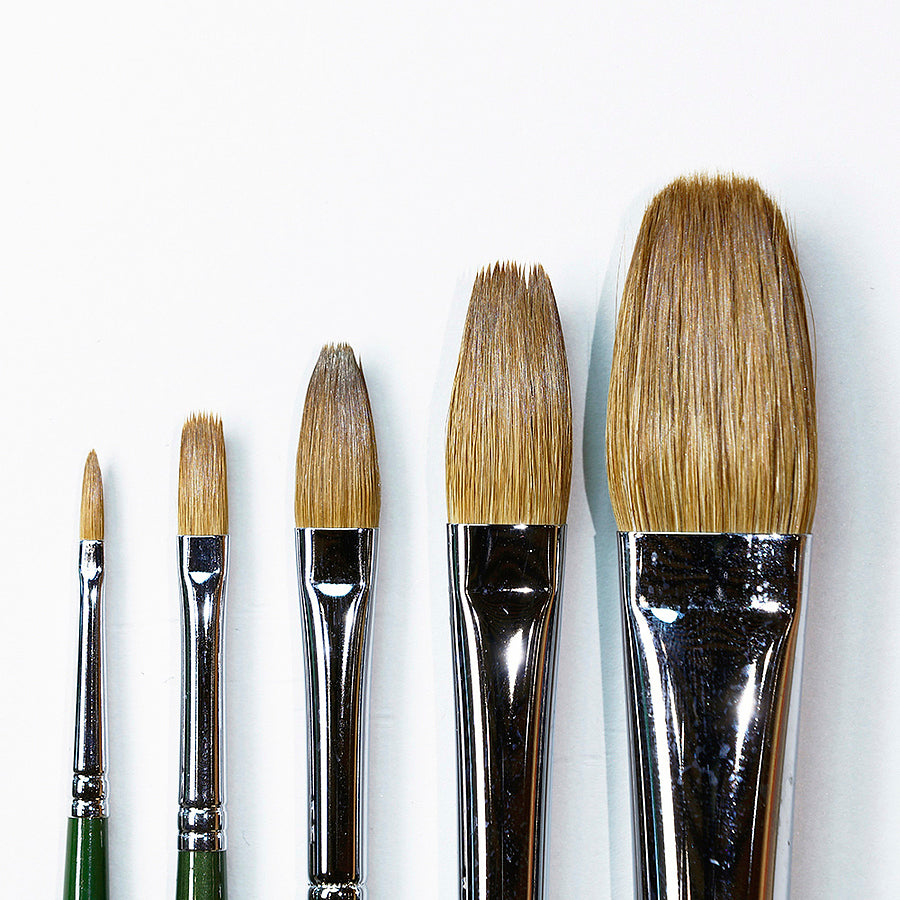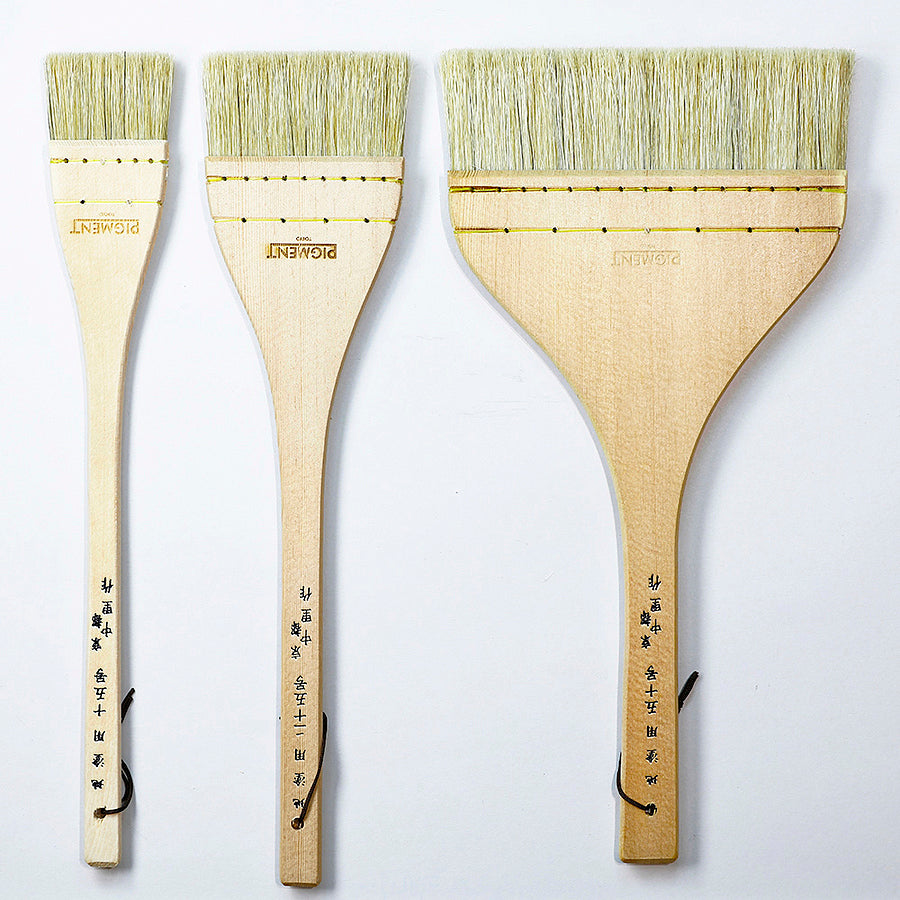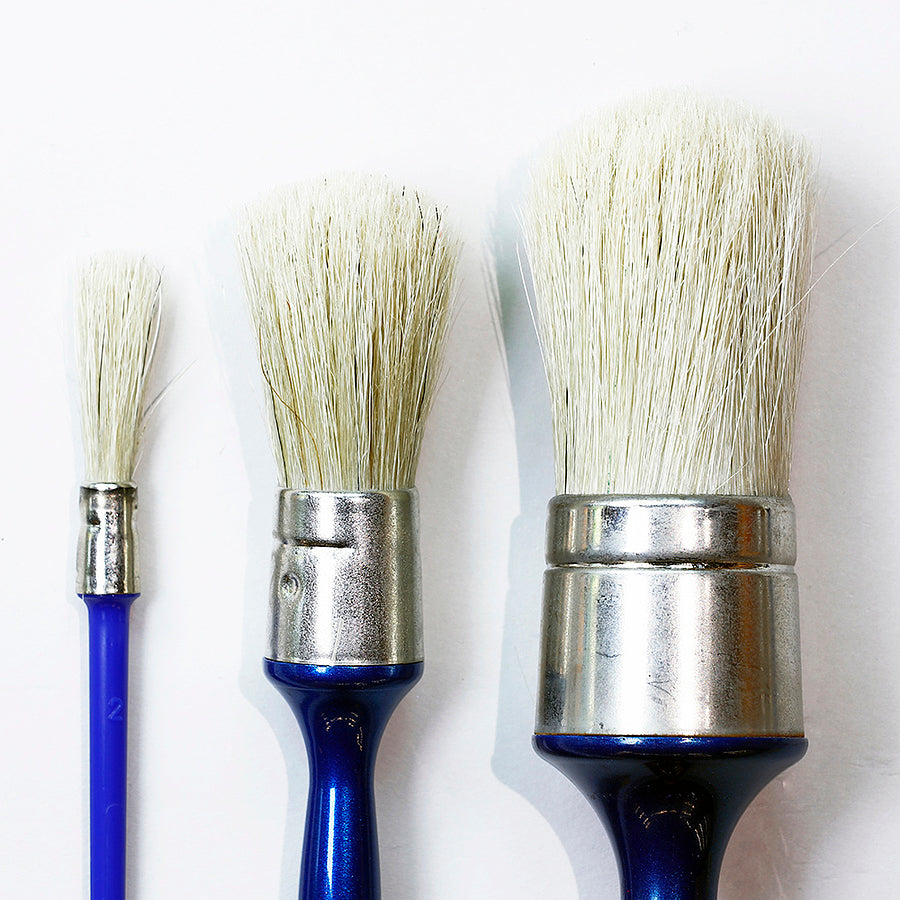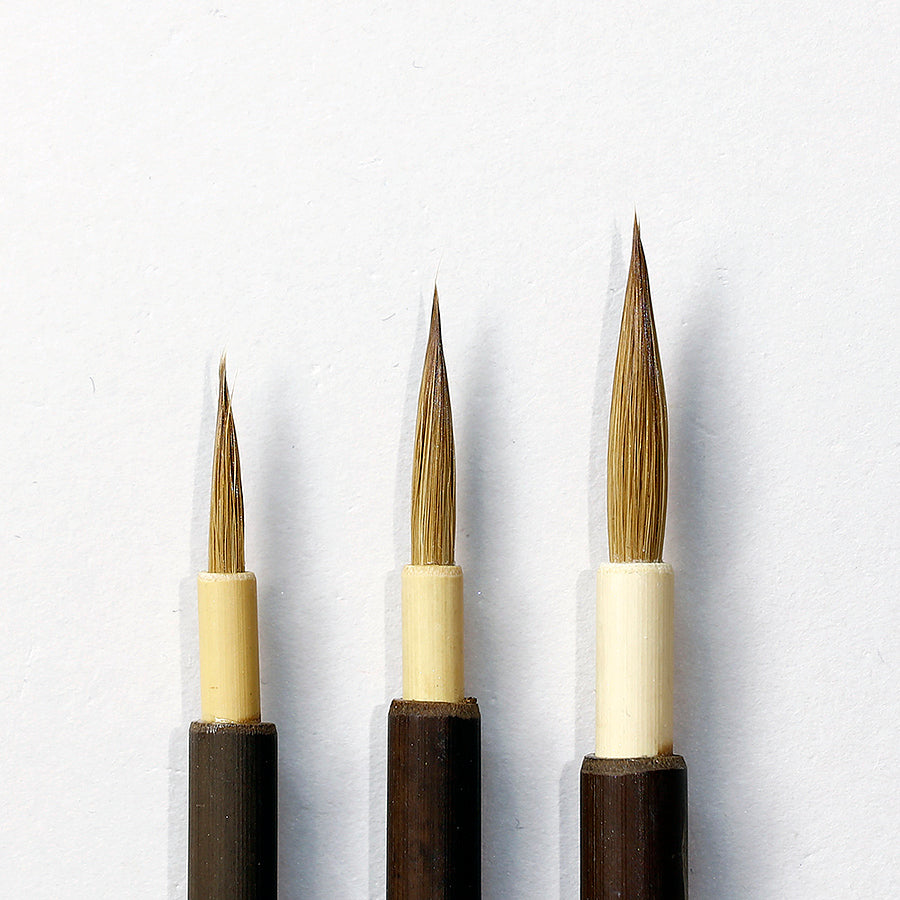If you’ve ever wondered, “Which brush is best for oil painting?” you’re not alone.
While oil painting is often referred to as a single category, it encompasses a variety of techniques and styles that have evolved over time.
For photorealistic works that employ classical techniques, soft brushes made from Kolinsky sable, horsehair or goat hair are generally preferred.
However, when aiming for a more expressive style, like those seen in the works of Van Gogh or Claude Monet, hog bristle brushes are highly recommended.
Hog bristle brushes offer strong resilience, excellent point retention and are relatively affordable, making them a popular choice among painters today.
This series features a range of brush sizes, from size 0 with a 4mm width to size 24 with a 22mm width. This makes them suitable from small-scale works to large paintings.
Since hog bristles are less flexible than soft goat hair brushes, they can be more challenging to control for delicate brush techniques. For beginners working on smaller pieces, we recommend selecting several brushes in every other size, such as sizes 0, 4, 8, and so on.
For fine detail work, such as hatching by layering lines or signing your artwork, we recommend the SK series of round and flat brushes from the Namura Taiseido Corporation.
Kolinsky refers to Siberian Kolinsky sable, which is considered the highest quality material for soft brushes. The high-level craftsmanship of this Japanese manufacturer allows for the creation of brushes that offer excellent paint retention and flexibility, with well-shaped tips that are ideal for precise line work.
For applying oil-based grounds or covering large areas with oil paint, we recommend using this Pig Hair Brush, a wide, flat hog hair hake brush designed for priming.
If you're interested in exploring traditional painting methods, consider trying hog bristle round brushes as well. They can help expand your range of expression in your artwork.
*Round Bridled Brush
Sorry, this item is no longer available.
Other than these brushes specifically designed for oil painting, there are other types of brushes that can also be suitable for oil-based media.
For example, brushes made from nylon or goat hair can be effectively used for layering oil colors by adjusting the paint’s consistency with oil mediums. Since oil paint becomes difficult to remove once it dries, it is necessary to clean brushes thoroughly with soap after each use. For this reason, high-end calligraphy or sumi-e brushes are not recommended for oil painting.
However, one exception is the Kolinsky Yuin Menso brush, a fine round brush originally made for traditional Japanese painting, which can also be used with oil paints for detailed work.
However, since the brush tip is not secured with a metal ferrule, the adhesive may loosen over time.
To prevent this issue, avoid leaving the brush submerged in volatile solvents like turpentine or mineral spirits.
When cleaning brushes after using oil paint, first wipe off the excess paint with a solvent like petroleum.
Then, wash the brush thoroughly with soap and water.
This process not only helps extend the life of the brush but also ensures that you can always work with brushes in good condition.
For more detailed information on brush cleaning methods, please take a look at the article below.
PIGMENT ARTICLES "How to Clean Your Paint Brushes"
Translated by Atsumi Okano, Nelson Hor Ee Herng
PIGMENT TOKYO Art Materials Experts


